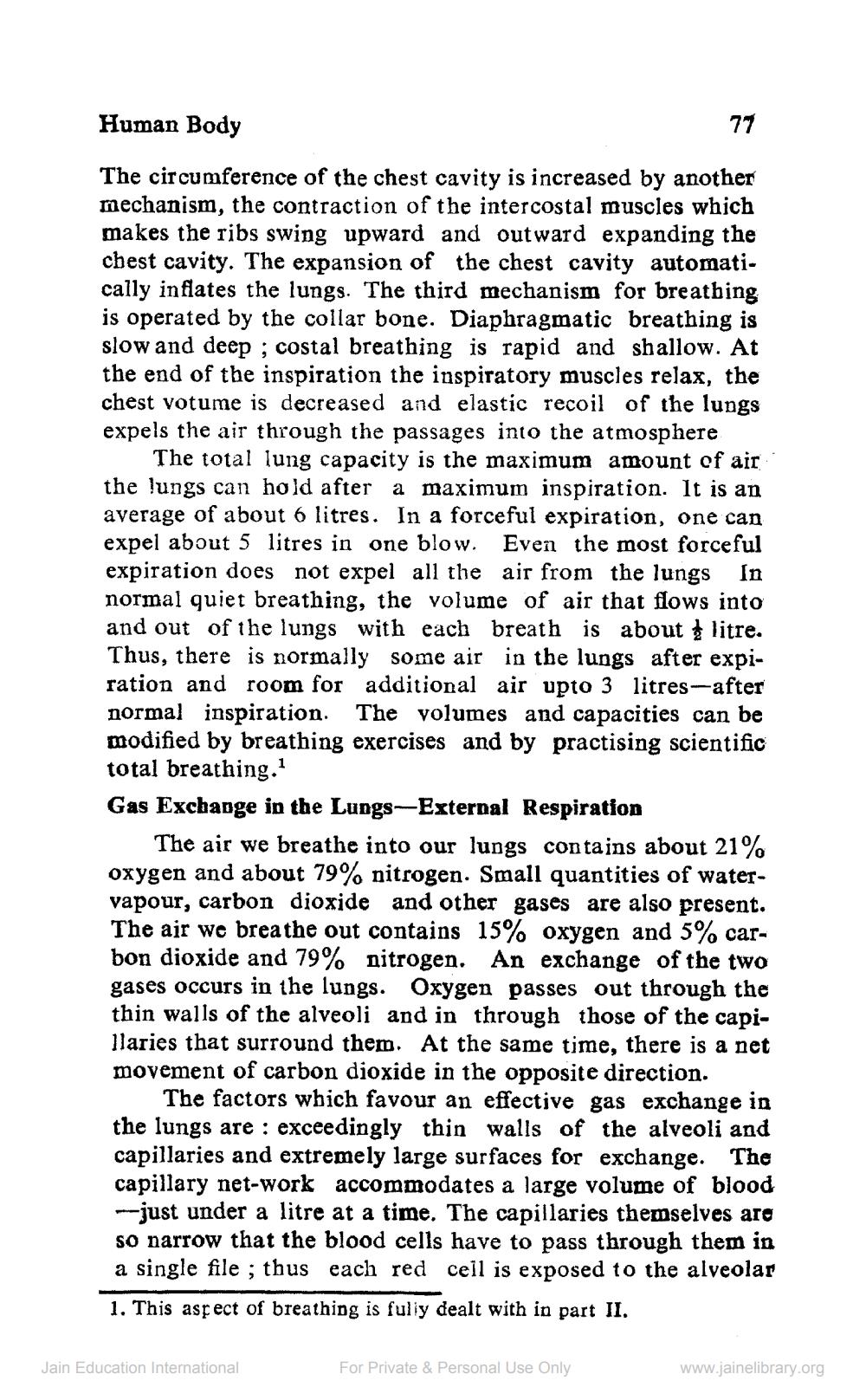________________
Human Body
77
The circumference of the chest cavity is increased by another mechanism, the contraction of the intercostal muscles which makes the ribs swing upward and outward expanding the chest cavity. The expansion of the chest cavity automatically inflates the lungs. The third mechanism for breathing is operated by the collar bone. Diaphragmatic breathing is slow and deep ; costal breathing is rapid and shallow. At the end of the inspiration the inspiratory muscles relax, the chest votume is decreased and elastic recoil of the lungs expels the air through the passages into the atmosphere
The total lung capacity is the maximum amount of air the lungs can hold after a maximum inspiration. It is an average of about 6 litres. In a forceful expiration, one can expel about 5 litres in one blow. Even the most forceful expiration does not expel all the air from the lungs in normal quiet breathing, the volume of air that flows into and out of the lungs with each breath is about #litre. Thus, there is normally some air in the lungs after expiration and room for additional air upto 3 litres-after normal inspiration. The volumes and capacities can be modified by breathing exercises and by practising scientific total breathing. Gas Exchange in the Lungs-External Respiration
The air we breathe into our lungs contains about 21% oxygen and about 79% nitrogen. Small quantities of watervapour, carbon dioxide and other gases are also present. The air we breathe out contains 15% oxygen and 5% carbon dioxide and 79% nitrogen. An exchange of the two gases occurs in the lungs. Oxygen passes out through the thin walls of the alveoli and in through those of the capillaries that surround them. At the same time, there is a net movement of carbon dioxide in the opposite direction.
The factors which favour an effective gas exchange in the lungs are : exceedingly thin walls of the alveoli and capillaries and extremely large surfaces for exchange. The capillary net-work accommodates a large volume of blood --just under a litre at a time. The capillaries themselves aro so narrow that the blood cells have to pass through them in a single file ; thus each red ceil is exposed to the alveolar 1. This aspect of breathing is fully dealt with in part II.
Jain Education International
For Private & Personal Use Only
www.jainelibrary.org




